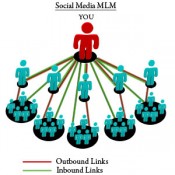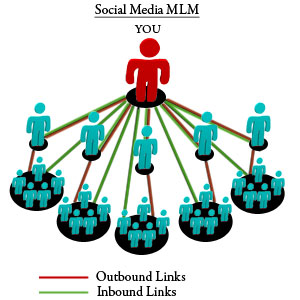It’s no secret, I love mobile, smart, cell technology. It’s intriguing and it’s been so for years, even though the year of mobile has never truly arrived. What does that mean, anyway? What will the year of mobile look like? Has anyone ever defined it and if they have why haven’t they shared it with the rest of us? I say the smartphone has hit the grown up mark, since (as the Boy Genius Report tells us) smartphone penetration has grown from 18% in 2009 to 44% at the end of 2011. Now that’s a big deal. Why? Because media is powered by advertising. Media loves advertising dollars to flow through for their ability to give content to the consumer, cheaply or for free. This is what keeps the masses coming back. Given that and the fact that the power and usability of mobile technology has advanced to the point where they can handle all media consumption and technical uses, mobile has become the bacon of tech.
anyone ever defined it and if they have why haven’t they shared it with the rest of us? I say the smartphone has hit the grown up mark, since (as the Boy Genius Report tells us) smartphone penetration has grown from 18% in 2009 to 44% at the end of 2011. Now that’s a big deal. Why? Because media is powered by advertising. Media loves advertising dollars to flow through for their ability to give content to the consumer, cheaply or for free. This is what keeps the masses coming back. Given that and the fact that the power and usability of mobile technology has advanced to the point where they can handle all media consumption and technical uses, mobile has become the bacon of tech.
Mobile: the Bacon of Tech
Social Media is Amway

 Yes, I’m convinced of it; social media (SM) is Amway. After reading a blog post by Jay Baer (@jaybaer) last week, entitled ‘Blinded by the White,’ I’ve been mentally engrossed in a thought that – not unlike other industries – social media leaders have emerged and surprise, surprise they look alike! While I slightly disagree that social media is a good ol’ boys’ club akin to the NRA in it’s pastiness, I do feel as though there is an elitism and social strata that I’ve yet to figure out.
Yes, I’m convinced of it; social media (SM) is Amway. After reading a blog post by Jay Baer (@jaybaer) last week, entitled ‘Blinded by the White,’ I’ve been mentally engrossed in a thought that – not unlike other industries – social media leaders have emerged and surprise, surprise they look alike! While I slightly disagree that social media is a good ol’ boys’ club akin to the NRA in it’s pastiness, I do feel as though there is an elitism and social strata that I’ve yet to figure out.
A good friend, and social media mafia under boss of sorts, David Murray, had a different take on Jay’s post, though. He noted that there is diversity but posed the question of whether or not SM is the new country club. I tend to be more in line with this type of thinking about SM. I don’t see the industry as closed off to minorities and women so much as I see there being an elite group of practitioners receiving the bulk of the benefit of SM – trickle down social-nomics, if you will.
I’ve had this idea for a while, but Jay’s post and Dave’s comments really helped crystallize the thought for me. There are some excellent social media practitioners from every demographic in this space. However, there are only a select few that get the benefit of what I like to call the echo chamber of SM. Given that this medium is naturally set up so that anyone can inexpensively gain scale, why is it so difficult to break through? There are likely two reasons this is true.
- Like Amway, the first and biggest suck up all the value and leave their followers fighting over scraps. Unless those followers can create their own sphere of influence, they’ll forever be a victim of being too low in the “down line” to effectively monetize the medium.
- The elite have built a network to make sure their revenue streams are interconnected and thusly less susceptible to the publics’ cyclical undulations of relevance and popularity. By them promoting each other we continue to buy all of their books, go to their conferences, pay their speaking fees and read their blogs.
Don’t misunderstand my bluntness here, either. I’m not knocking the hustle, merely pointing it out as a matter of human nature and fact. No matter how great of a post I write, why would a Chris Brogan or Amber Naslund read it, promote it or even have the time to do so?! They’re busy and I don’t offer enough value for them to take that time. I make time/benefit decisions every day in my work, and am sympathetic to the plights of busy people.
The rub, however, is in the rhetoric. It is difficult for me to see posts about engagement, sharing and community, by the leaders of the movement, but little reciprocation. Instead, I feel like I’m 10 years old again, and I can hear my Dad saying, “do as I say, not as I do” while peering authoritatively over the top rim of his glasses. The elite benefit by massive followers sharing their material, therefore building up their social influence and allowing them to capitalize – handsomely – on that influence. However, there are very few times that I have seen or felt the tug up the ladder.
Hey if I was the Steve Van Andel or Doug De Vos of SM, I wouldn’t have time for you peons either. Luckily this is not a goal of mine but I would like to see growth by some of the other smart people in SM I know. So, it would make sense to put down our sycophantic ways and begin to create new networks that support quality individuals that have simply not gotten the traction from the faction.
Who’s with me!? If so, please Tweet this and tell people how awesome I am; I hear it’s great for my social street cred. Not to mention, if you scratch my back I’ll scratch yours. No, seriously, I’m not big enough to ignore you yet.
IMC: Put Together
 Like any good outfit (as John Witherspoon saying, “Cooo-rdinate” in ‘Boomerang’ leaps in my head) an Integrated Marketing Communications (IMC) Campaign should be a coordinated effort to use the variant business communication tools to further one big message. Regardless of whether or not your brown belt is your favorite, you likely don’t want to wear it with your red shirt and black shoes. That is NOT put together. There are some actions you can take to make sure that your IMC campaign is cohesive.
Like any good outfit (as John Witherspoon saying, “Cooo-rdinate” in ‘Boomerang’ leaps in my head) an Integrated Marketing Communications (IMC) Campaign should be a coordinated effort to use the variant business communication tools to further one big message. Regardless of whether or not your brown belt is your favorite, you likely don’t want to wear it with your red shirt and black shoes. That is NOT put together. There are some actions you can take to make sure that your IMC campaign is cohesive.
First, you have to establish a big idea. The big idea encapsulates your total message in a few simple words or phrases. You should be able to use this to start your elevator pitch, but it is not necessary to have it in your communications (it is not your slogan). For instance if I run a basketball team on the verge of greatness, my big idea could be “We will work harder than ever to win a championship.” A good logo to back that up might be, “Champions work harder.” The preceding works as a big idea because it is distinctive, relevant, unifying, memorable, and can be easily translated into sales – all of the necessary elements of an effective big idea.
In-game promos could include hard hats with the team logo & slogan with the word, “win” scribed on the back. This supports the big idea with the word win, and the slogan by applying the hard hat prop. The team website could be marked with construction tape, reading “Caution: Construction Area” in the team colors. Instead of having a stats page, it could be changed to a “Performance Evaluations” page. The ideas are nearly endless on the website.
Local television promos could show the guys in overalls carrying pick axes punching time clocks under the basket with the star of the team saying, “it’s time to go to work.” Then, a cut to a montage of the team running drills and dunking could ensue. Or, maybe a bunch of hustle plays with guys hitting the deck and scrapping for the ball might also work as an ending montage.
The sales people that year would sell “office badges” instead of tickets. Corporate ticket packages could be called “offsite meeting tickets.” Finally the pitch for all this might sound something like, “This year the (Basketball Team Here) plans to show you the benefit of hard work, and the product they’ll deliver this season will be our best effort yet. Don’t miss out on a great season that will be the result of aggressive work toward our championship goal. Which ticket package can I get you?”
The direct mail campaign might visually resemble an internal company memo that looks like a prospectus that shows the stock of the company (team) based off of the increased production of effort and the call to action would ask for a “stock purchase” through the advent of buying tickets. The direct email will match this message exactly, for increased cohesiveness.
The social campaign would be a great place to get engagement and connect the team to the fans by asking for submissions of people wearing their team gear at work. Maybe the coolest pic or video gets four free tickets. The blog might work as a daily journal of how much effort and sweat equity goes into training camp. The twitter stream would have to directly engage fans by conversing with them about team updates and the fans’ jobs/careers.
Finally the stadium (or service-scape) could have the road construction barrels in the team colors in the hallways, signs that reads “Team at work,” and the large concessions stand cups could look like coffee mugs.
Now, this team has a cohesive integrated marketing communications campaign that can be applied to any other form of communication they send out also. The difficulty is in matching the big idea to every message and medium. If you do you will have a consistent message that creates a feeling that is unmistakable in its affect regardless of medium, while naturally promoting engagement around that centerpiece – kind of like a cool shirt sets the tone for the rest of the outfit.
Now go be brilliant in the creation of your IMC campaigns!
In the Ram Zone
The following is a blog that I wrote for R. L. Polk, an automotive and trucking industry market analysis and data company, that focuses on some of the things that I’ve been talking about recently. I plan to highlight good programs that deal with social media and permission marketing along high quality marketing communication. I enjoy being able to look at people doing it right and the people at Ram Trucks are definitely doing it right. I hope you enjoy…
Usually you hear of athletes being in the zone and they say phrases like, “the goal looked like an ocean,” and “the game seemed to slow down.” Well, ever since breaking away from Dodge and becoming their own brand, Ram Trucks has been in the zone – literally and figuratively. Their aptly named blog, “The Ram Zone” represents the engagement centerpiece of the Ram Trucks Integrated Marketing Communications strategy. This along with an excellent product will surely make for brand resonance with Ram owners, and a recognized personality that is unmistakably unique to Ram Trucks alone. They are reaching people through a variety of digital channels, experiential events, in-store promotions and partnerships. I’m pretty impressed with what the Ram people have accomplished in a few short months. The following is what I’ve noticed.
seemed to slow down.” Well, ever since breaking away from Dodge and becoming their own brand, Ram Trucks has been in the zone – literally and figuratively. Their aptly named blog, “The Ram Zone” represents the engagement centerpiece of the Ram Trucks Integrated Marketing Communications strategy. This along with an excellent product will surely make for brand resonance with Ram owners, and a recognized personality that is unmistakably unique to Ram Trucks alone. They are reaching people through a variety of digital channels, experiential events, in-store promotions and partnerships. I’m pretty impressed with what the Ram people have accomplished in a few short months. The following is what I’ve noticed.
Social Media Marketing
The main piece, as I previously mentioned, is their blog The Ram Zone. Here you can keep up with all news Ram, while registering to join the community so you can comment about the stories and connect with other Ram owners. Additionally, there is a gallery with tons of immersive pictorial content. Most important, the blog promotes a Ram Trucks lifestyle that is decidedly tough, hard-working and showing a love for the great outdoors.
There are also easy navigation buttons to the flickr page, and Facebook Fan page where there are nearly 21,000 fans of Ram Trucks. Many of these fans have uploaded pictures and descriptions of their Ram truck, which has created a strong community. They also have a twitter feed, but there doesn’t seem to be as much engagement here. It is just a barrage of event details and tweets containing pictures of those events. They also have their own YouTube channel, with videos of Rams doing some gnarly things.
Strategic Partnerships
When developing a new brand, it is often easier to introduce your position by attaching to a more established name and/or cause to create the desired emotive affect. That is what Ram Trucks has done with Letters for Lyrics and the Zac Brown Band. They’re attempting to get to 1,000,000 letters to soldiers in war zones, while offering some great concerts and music. Dealers benefit too, because the repositories for the letters are only at Ram Trucks locations.
As the website states, the promotion works like this:
- Write a letter to a soldier
- Take it to a Ram dealer
- Receive the free CD
Experiential Events
Finally, Ram Trucks is taking their Motor Trend Truck of the year all over the place to compete in sled pulls, do demonstrations for on-lookers or create viral videos of Rams doing outrageous stuff. Then, to bring it all home, they post the videos and pics up on their website, flickr, YouTube, Facebook, twitter feed, write blog posts and promote lively discussion in all those places.
No matter where they have shown up, Ram Trucks have promoted their slogan…which is either “Get Some Mud on Your Tires,” or “Nothing Works Harder than a Ram.” Either one works. What do you think of the new Ram Trucks brand? Have they captured your attention with their aggressive brand messaging
Win Friends and Influence People – Online

 Regardless of the technology that people invent to improve lives, make it easier to communicate & share or simply make a buck, the old tips from Dale Carnegie still ring true. Maybe even more so, now, because we have much more contact with exponentially more people via the social web. As a business owner and brand ambassador, this is especially true. How often do you actively implement these strategies? More important, if they were so important to implement with a limited sphere of influence, then why not utilize them in a social media message to gain positive affect for yourself, your brand, and your business?
Regardless of the technology that people invent to improve lives, make it easier to communicate & share or simply make a buck, the old tips from Dale Carnegie still ring true. Maybe even more so, now, because we have much more contact with exponentially more people via the social web. As a business owner and brand ambassador, this is especially true. How often do you actively implement these strategies? More important, if they were so important to implement with a limited sphere of influence, then why not utilize them in a social media message to gain positive affect for yourself, your brand, and your business?
There were four main points to Carnegie’s book, and they can be used, today, with technology. It may be just the thing you need to encourage dialog and enhance your brand image. [Read more…]



Follow Us!